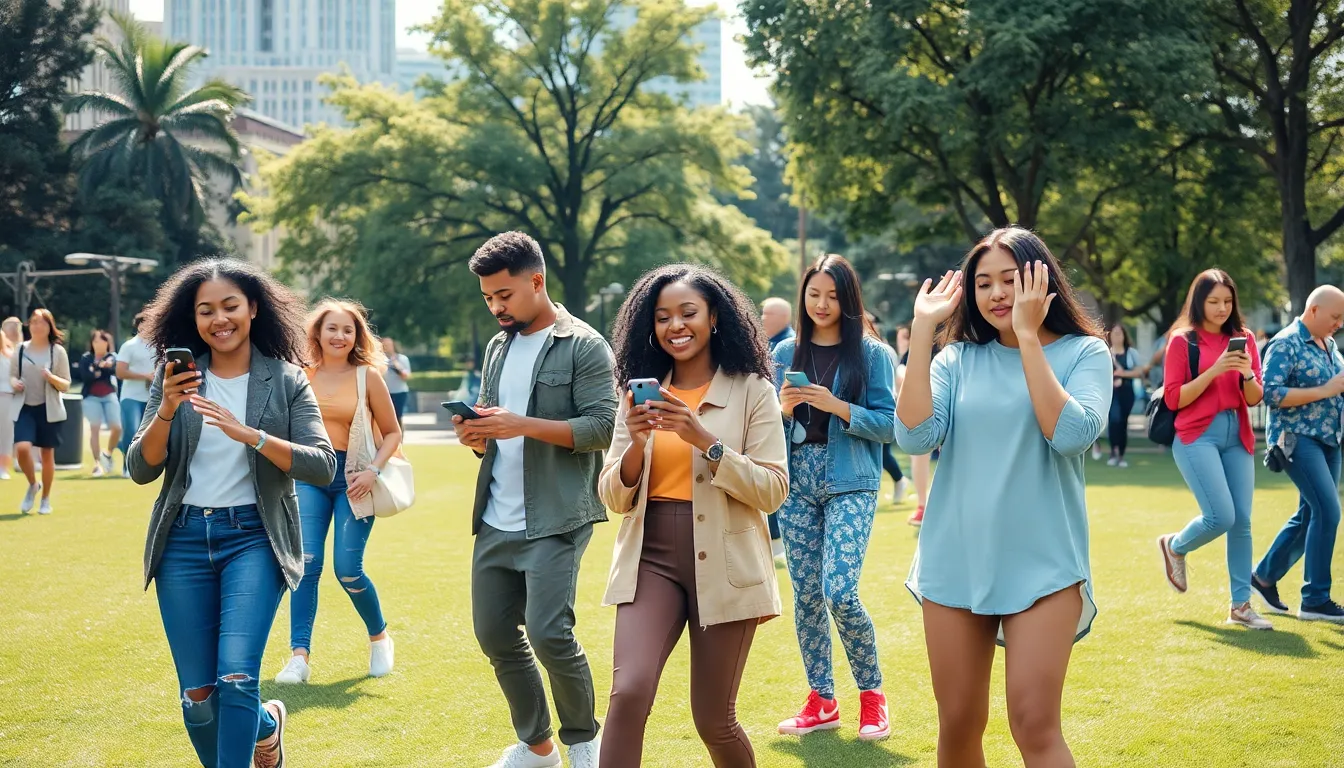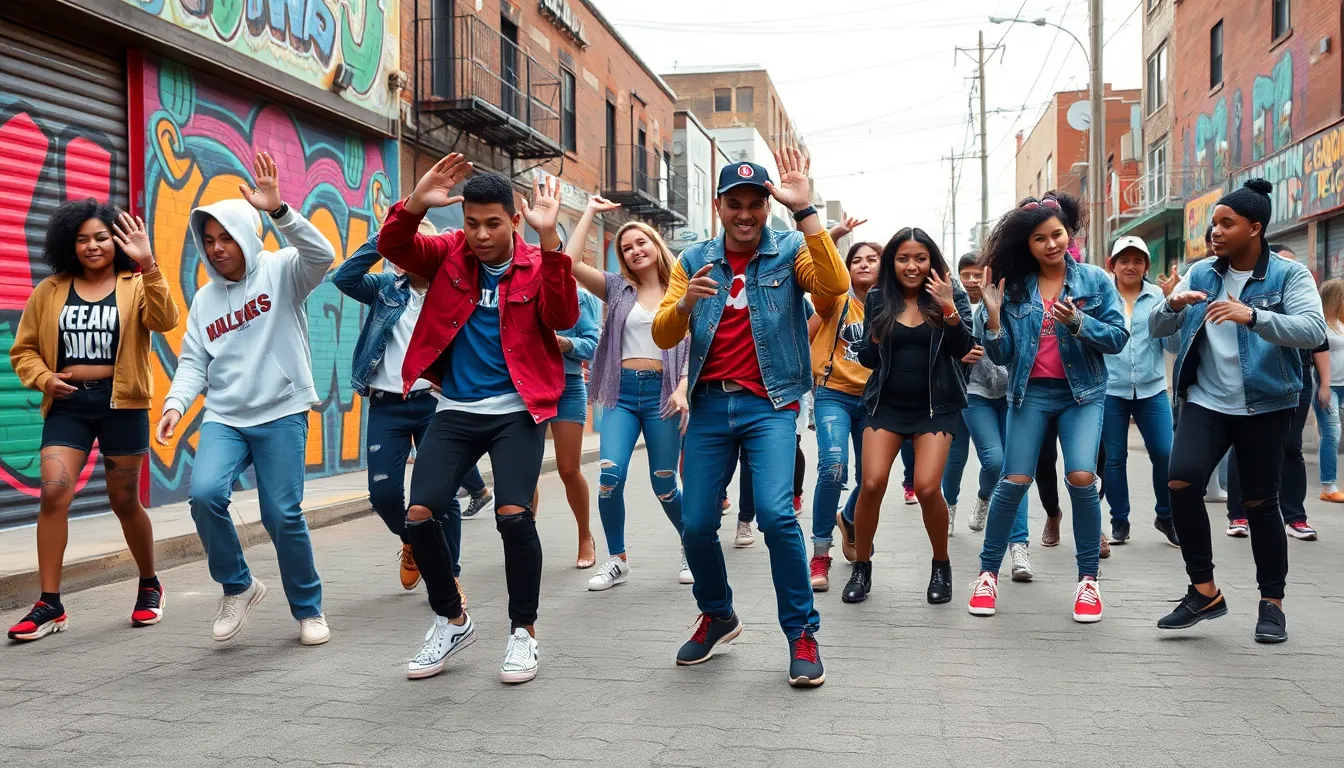Cultural trends are like the latest fashion—sometimes they’re fabulous, and other times, they just leave you scratching your head. From viral TikTok dances to the resurgence of vinyl records, these trends shape how people connect, communicate, and express themselves. But what makes a trend stick? Is it sheer genius or just a lucky meme?
Table of Contents
ToggleOverview of Cultural Trends
Cultural trends reflect shifts in behavior, preferences, and values within society. They’re often driven by factors such as technology, social media, and collective experiences. Viral TikTok dances exemplify how quickly trends can form and spread, uniting diverse generations through shared movements.
Vinyl records have seen a resurgence, indicating a desire for nostalgia and tangible experiences in a digital age. Many enthusiasts appreciate the warmth of analog sound, showcasing how past trends can influence present preferences. Collectively, these trends create opportunities for self-expression and connection among individuals.
The longevity of trends raises essential questions. Some trends endure because of their creativity, while others ride a wave of popularity driven by chance. Historical examples, such as the popularity of streetwear or the rise of mindfulness practices, illustrate this complexity.
Changes in cultural trends often signal broader societal shifts. For instance, increased awareness of mental health has sparked trends in wellness, emphasizing self-care and holistic living. Each trend serves as a mirror, reflecting societal values and attitudes at a particular moment.
Ultimately, cultural trends are dynamic and interconnected. Observing these trends can provide insights into consumer behavior and emerging values. Recognizing these connections allows for a deeper understanding of societal changes and their implications.
Evolution of Cultural Trends

Cultural trends evolve significantly over time, influenced by historical events and contemporary factors. Understanding these changes provides insight into society’s behavior and preferences.
Historical Context
Cultural trends often reflect historical moments that shape societal values. The 1960s counterculture movement introduced themes of peace and love, which redefined social norms. In the 1980s, the rise of pop culture and music videos transformed entertainment consumption patterns. Trends such as punk rock and hip-hop emerged, challenging existing social structures. Examining these periods shows how cultural movements respond to political and social changes, creating lasting impacts on subsequent generations. The impact of globalization cannot be underestimated either, as it fosters cultural exchange and blends diverse influences into unique trends.
Contemporary Influences
Today, technology plays a crucial role in shaping cultural trends. Social media platforms serve as breeding grounds for viral content, enabling rapid trend dissemination. TikTok exemplifies this phenomenon, where dance challenges and memes unite audiences across age groups. Additionally, the increased focus on mental health drives trends in wellness and self-care practices. This shift highlights society’s changing values as individuals seek deeper connections to their well-being. Trends also reflect marketers’ strategies that leverage modern technology, boosting their visibility and appeal to broader demographics. Consequently, cultural trends have become dynamic, reflecting the complex interplay of technology, social behavior, and consumer preferences.
Impact of Technology on Cultural Trends
Technology significantly influences cultural trends, reshaping how people interact and express themselves. Through rapid advances, new platforms emerge, altering participation in cultural movements.
Social Media’s Role
Social media revolutionizes how trends spread and develop. TikTok and Instagram facilitate rapid sharing, allowing trends to reach global audiences within days. Users engage with trends by creating content, leading to viral challenges that capture collective attention. The collaborative environment nurtures creativity as users remix each other’s ideas. This phenomenon fosters connections across generations, as diverse age groups participate in the same challenges. Peaks in user-generated content highlight the transient nature of trends, reflecting changing interests. The influence of social media aligns with evolving societal values, emphasizing authenticity and inclusivity.
Streaming and Content Consumption
Streaming services redefine entertainment consumption, impacting cultural trends. Platforms like Netflix and Hulu create accessible environments for diverse content. Viewers now engage with series that address contemporary issues, shaping public discourse. Data reveals a growing interest in niche genres, as global audiences seek unique narratives. Audience preferences shift, leading to increased demand for inclusive representation. Trends in binge-watching encourage shared experiences, as friends connect over favorite shows. The availability of on-demand content allows for immediate cultural conversations, intensifying responses to societal issues. Streaming experiences highlight how technology fosters community and drives cultural engagement.
Globalization and Cultural Exchange
Globalization significantly impacts cultural trends by facilitating cultural exchange between societies. Diverse cultures now interact more than ever, leading to enriched social experiences.
Cross-Cultural Interactions
Cross-cultural interactions foster understanding and collaboration among individuals. Global communication and travel enable people to experience different traditions, cuisines, and art forms directly. Festivals celebrating global cultures showcase this exchange, attracting participants and attendees from various backgrounds. Language learning apps further facilitate connections, encouraging users to engage with customs and perspectives of others.
Cultural Appropriation vs. Appreciation
Cultural appropriation and appreciation often generate discussions around respect and representation. Appropriation involves adopting elements of one culture by members of another, typically without permission or understanding. In contrast, appreciation involves a sincere respect for and acknowledgment of cultural significance. Organizations and creators benefit from understanding this distinction, as it influences public perception and fosters positive interactions. Engaging authentically with cultures leads to enriched experiences for everyone.
Notable Cultural Trends of the Last Decade
The last decade saw significant cultural trends that shaped social interactions and expressions of identity.
Fashion and Aesthetics
Streetwear gained prominence, merging athletic styles with high fashion. Casual clothing, often branded with logos, resonated with younger generations. Sustainability emerged as a crucial focus, prompting brands to adopt eco-friendly practices. Thrift shopping surged as consumers sought vintage pieces, emphasizing individuality and environmental consciousness. In addition, minimalism thrived, showcasing clean designs and neutral palettes that simplified lifestyle choices. Retro styles also made a comeback, with 90s aesthetics influencing current fashion trends. These shifts reflect broader societal values, such as inclusivity and awareness of environmental impact.
Music and Entertainment
Streaming platforms transformed music consumption, granting instant access to diverse genres. Global music trends surged, with K-pop rising to prominence and influencing pop culture worldwide. Artists increasingly collaborated across genres, leading to innovative sounds and blended styles. Binge-watching series became a cultural phenomenon, with viewers engaging deeply in narrative arcs. Social media drove viral trends, allowing songs and artists to gain popularity overnight. Additionally, representation in media evolved, with a notable increase in diverse narratives featured in films and television shows. Such developments fostered richer cultural discussions and connected audiences across generations.
Cultural trends are a fascinating lens through which to view society’s evolving values and behaviors. They reveal how technology and social media shape connections and self-expression. As individuals navigate these trends they contribute to a shared cultural narrative that reflects both personal and collective experiences.
The interplay between nostalgia and innovation continues to drive trends forward, creating a rich tapestry of influences that resonate across generations. Understanding these dynamics not only enhances appreciation for cultural phenomena but also fosters a deeper connection to the diverse world around us. As trends evolve they will undoubtedly continue to reflect the complexities of modern life.



